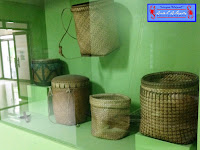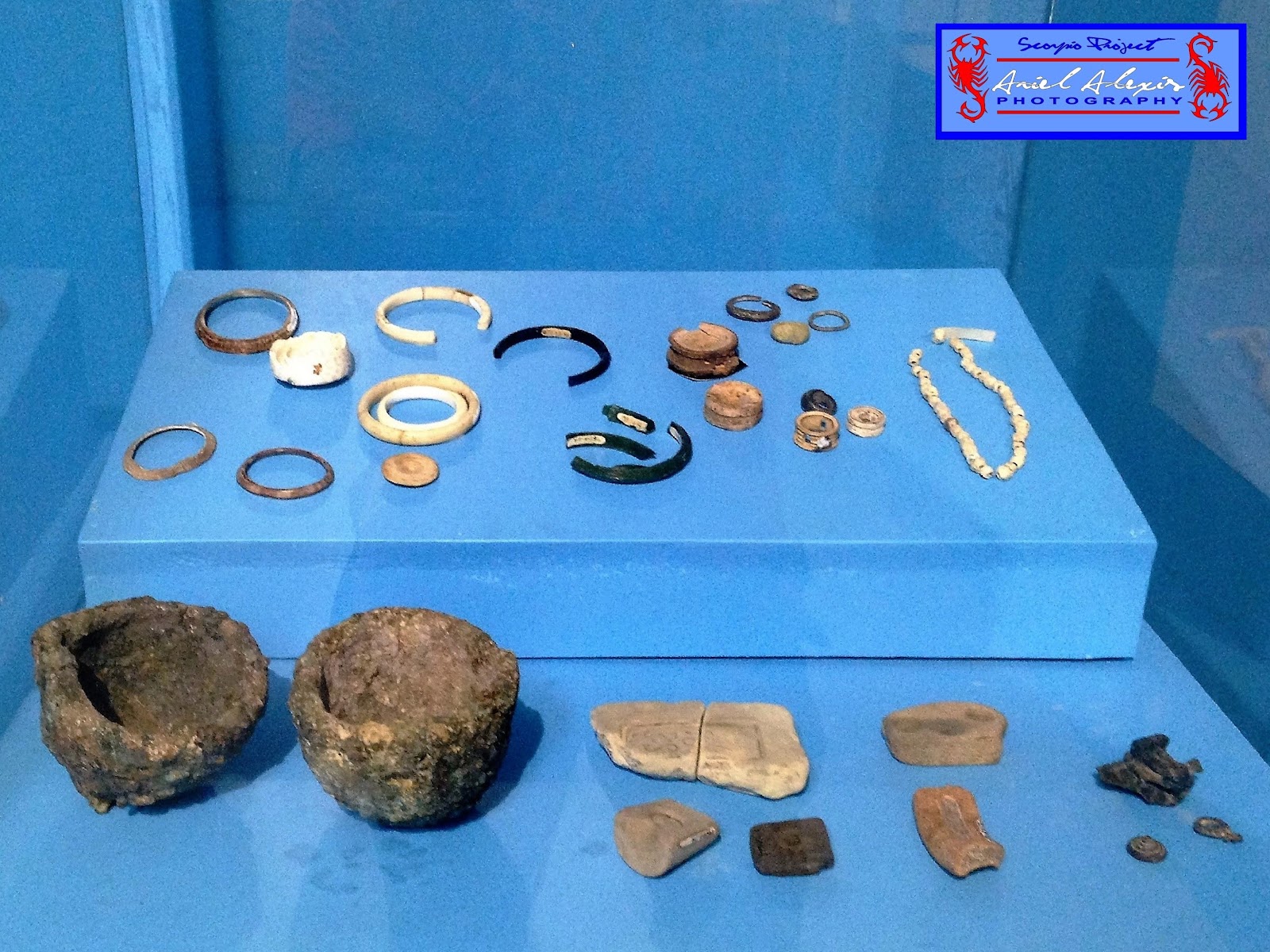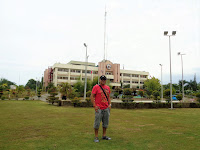Known as one of the oldest kingdoms in pre-Hispanic Philippines, Butuan never fails to intrigue weekend warriors who crave for historical discoveries that are embedded in the cultural heritage of this so-called “Prehistoric City.” Given its historical significance and cultural heritage, I find Butuan an interesting destination worth exploring.
 |
 |
That’s
why when the chance to see the city anew came my way, I readily grabbed it. Two
years since I last revisited it, I missed bumming around Butuan. Besides, my
environment has turned toxic in recent weeks. I badly needed to escape to a
destination that can buck me up. I craved for a breather somewhere far where I
can detoxify and regain a part of me I’ve lost in the rat race. And the city
came out on top of my choices.
Taking
advantage of the long holiday break this month, I hastily came up with my
itinerary, made arrangements for my accommodations, and packed my stuff for a
4D/3N escapade. Destination? Agusan del Norte, with Butuan as my home away from
home.
 |
| Excavation site of the balangays in Libertad, Butuan |
Perhaps
the prehistoric city is best remembered in history as the land of the balangays (or balanghais), the oldest known watercrafts used by ancient
Filipinos. Several of these boats were discovered in Butuan in 1976 and even
recently in other parts of the Agusan provinces, with some of them finding
their way into both local and national museums.
 Way back
in 2014, I saw for the first time one of those boats in a local museum in
Libertad, Butuan. Geez, the experience gave me goosebumps! For more about this,
visit my posts at http://scorpio-sojourn.blogspot.com/2014/05/bucked-up-by-butuan-city-part-1.html
and
http://scorpio-sojourn.blogspot.com/2014/05/bucked-up-by-butuan-city-part-2.html.
Way back
in 2014, I saw for the first time one of those boats in a local museum in
Libertad, Butuan. Geez, the experience gave me goosebumps! For more about this,
visit my posts at http://scorpio-sojourn.blogspot.com/2014/05/bucked-up-by-butuan-city-part-1.html
and
http://scorpio-sojourn.blogspot.com/2014/05/bucked-up-by-butuan-city-part-2.html.  | ||
| Branch of the National Museum in Butuan |

 Of the
nine boats unearthed in Butuan, only three (if I’m not mistaken) have been
carbon-dated and are now on display, two in Butuan and one at the National
Museum in Manila. These have been declared as National Cultural Treasures thru
a presidential proclamation during the administration of the late President
Corazon Aquino. The other six vessels, on the other hand, have been kept in
their waterlogged state, which experts consider as the best way of preserving
them.
Of the
nine boats unearthed in Butuan, only three (if I’m not mistaken) have been
carbon-dated and are now on display, two in Butuan and one at the National
Museum in Manila. These have been declared as National Cultural Treasures thru
a presidential proclamation during the administration of the late President
Corazon Aquino. The other six vessels, on the other hand, have been kept in
their waterlogged state, which experts consider as the best way of preserving
them. |
| Main lobby of the museum |
 |
Of the
nine boats unearthed in Butuan, only three (if I’m not mistaken) have been
carbon-dated and are now on display, two in Butuan and one at the National
Museum in Manila. These have been declared as National Cultural Treasures thru
a presidential proclamation during the administration of the late President
Corazon Aquino. The other six vessels, on the other hand, have been kept in
their waterlogged state, which experts consider as the best way of preserving
them.
 |
| Remnants of a balangay boat on display at the Butuan National Museum |
When I
last came to the city, I failed to see the other boat that’s being at the
Butuan National Museum. For this recent sojourn, I made it a point to drop by
the museum for a look-see. Located a block away from the city hall, the museum
houses a number of precious artifacts, the most important of which is the balangay.
 |
| A few of the ancient relics on exhibit at the museum |
Other
than the boat, what’s in store for visitors who pay a visit to the museum? A
lot! On display are several artifacts associated with the indigenous tribes in
the Caraga Region—farming tools and implements, baskets, musical instruments,
textiles, and personal adornments.
 Collections
also include excavated materials such as adze and tablet; mortar and pestle;
wooden paddles; ceramics wares, etc. Also being showcased in the museum are
trinkets and ornaments made of gold, silver, copper and bronze.
Collections
also include excavated materials such as adze and tablet; mortar and pestle;
wooden paddles; ceramics wares, etc. Also being showcased in the museum are
trinkets and ornaments made of gold, silver, copper and bronze.
Whew, I
had a field day scouring the museum (which is undergoing renovation) and gazing
at the numerous historical and cultural finds!
 |
| Embossed mural depicting life in pre-historic Butuan |
 |
| Scale model of a balangay boat |
 |
| Fishing is the dominant means of livelihood in Masao |
 |
| The road to Masao |
So,
what’s with Masao and what is its connection to the rub? Well, it’s about the
exact location of the first Roman Catholic celebration of the Holy Eucharist on
Easter Sunday, which, from what I’ve learned in my history classes, was held in
Limasawa in Southern Leyte. But try asking any Butuanon about this and chances
are, his answer would be different.
 |
| Masao Bridge |
Why?
Because to many Butuanons, it wasn’t held in Limasawa at all but right smack in
their city! Way back in the mid-1990s, Butuan hugged the national limelight
when one of her legislators filed a bill in Congress refuting Limasawa as the
venue of the holy event. How on earth could that be? How could two places claim
to be the venue of an event that happened nearly 500 years ago?
 | |||
| Masao Beach |
Apparently, the city’s claim was forwarded to
the National Historical Institute, which formed an investigative panel that
eventually issued a resolution favoring Limasawa as the venue, a decision subsequently
adopted by the historical commission. Intrigued, I wanted to discover for
myself the backstory of Butuan’s assertion over the venue of the first mass in
the country.
Earlier editions of history books tell us that
Fr. Pedro de Valderamma, chaplain of Magellan’s fleet, celebrated the historic
mass in Philippines (which Magellan named the Archipelago of St. Lazarus) on
March 31, 1521 on an island recorded by the Portugeuse explorer’s official
chronicler, Antonio Pigafetta, to be Mazaua whose location is the bone of
contention among historical experts to this very day.
 |
| Magellan's Anchorage Memorial in Masao, Butuan |
 Some historians are questioning NHI’s ruling of Limasawa as the venue of the said
event. Certain quarters aren’t buying the NHI’s decision since Limasawa has no
harbor where Magellan’s ships could have sought refuge from a storm at that
time. Then there’s the Butuan claim which argues that Mazaua is actually what
is now modern-day Masao in Butuan.
Some historians are questioning NHI’s ruling of Limasawa as the venue of the said
event. Certain quarters aren’t buying the NHI’s decision since Limasawa has no
harbor where Magellan’s ships could have sought refuge from a storm at that
time. Then there’s the Butuan claim which argues that Mazaua is actually what
is now modern-day Masao in Butuan.  |
| Mural depicting Magellan's landing in Mazaua |
Being a Mindanaoan, I’m raring to support the
Butuanons’ claim but then again I can’t because it could be flawed! As we know it, the
fishing village of Masao nor Butuan isn’t an island.
Now, if geological experts can show proof beyond reasonable doubt that the lost island of Mazaua had actually “geomorphed”—is that possible in the first place?—into Masao then, by all means, I’d join any protest against NHI for propagating a historical hoax.
 But
then again, there’s a possibility that someone misinterpreted the transcripts
of Pigafetta, thus, perpetuating a possible deception of great proportions.
But
then again, there’s a possibility that someone misinterpreted the transcripts
of Pigafetta, thus, perpetuating a possible deception of great proportions.
Now, if geological experts can show proof beyond reasonable doubt that the lost island of Mazaua had actually “geomorphed”—is that possible in the first place?—into Masao then, by all means, I’d join any protest against NHI for propagating a historical hoax.
 But
then again, there’s a possibility that someone misinterpreted the transcripts
of Pigafetta, thus, perpetuating a possible deception of great proportions.
But
then again, there’s a possibility that someone misinterpreted the transcripts
of Pigafetta, thus, perpetuating a possible deception of great proportions.
So adamant are the Butuanons about their claim
that they’ve put up some shrines in honor of Magellan. One of these was the
memorial depicting Magellan’s Anchorage in Masao Beach, which I was able to visit.
Several resorts now dot the black-sand strip where the shrine is located.
 |
 | |
| Butuan City Hall |
There are claims other than that of Limasawa
and Masao as in the case of two other Butuan villages, Pinamanculan (where the
Bood Promontory is found) and Bancasi (where the airport is located). According
to a group of earth scientists, these two fit the latitude of the lost port of
Magellan’s fleet. But so far, the first two contenders, have proven to be the
most hotly debated.
 So, where’s the real site of the first recorded
mass in the country? Limasawa, Masao, Bancasi or Pinamanculan? Once an easy
question to answer during my school days has turned into a tough dilemma for
today’s history student! Until solid evidence surfaces to prove any of these
claims, nobody knows for sure. As truth concerning Magellan’s landing yet to be
firmly established, everyone’s guess is as good as mine and yours.
So, where’s the real site of the first recorded
mass in the country? Limasawa, Masao, Bancasi or Pinamanculan? Once an easy
question to answer during my school days has turned into a tough dilemma for
today’s history student! Until solid evidence surfaces to prove any of these
claims, nobody knows for sure. As truth concerning Magellan’s landing yet to be
firmly established, everyone’s guess is as good as mine and yours.
Accordingly, the national government should
exert more efforts to rectify the inconsistencies surrounding this historical
event, which probably resulted from the wrong translation of Pigafetta’s
chronicles. And those responsible for perpetuating the hoaxes that have
remained in the annals of Philippine history to this day should be held
accountable.
Now, who says understanding history is child’s
play? :-D
















No comments:
Post a Comment